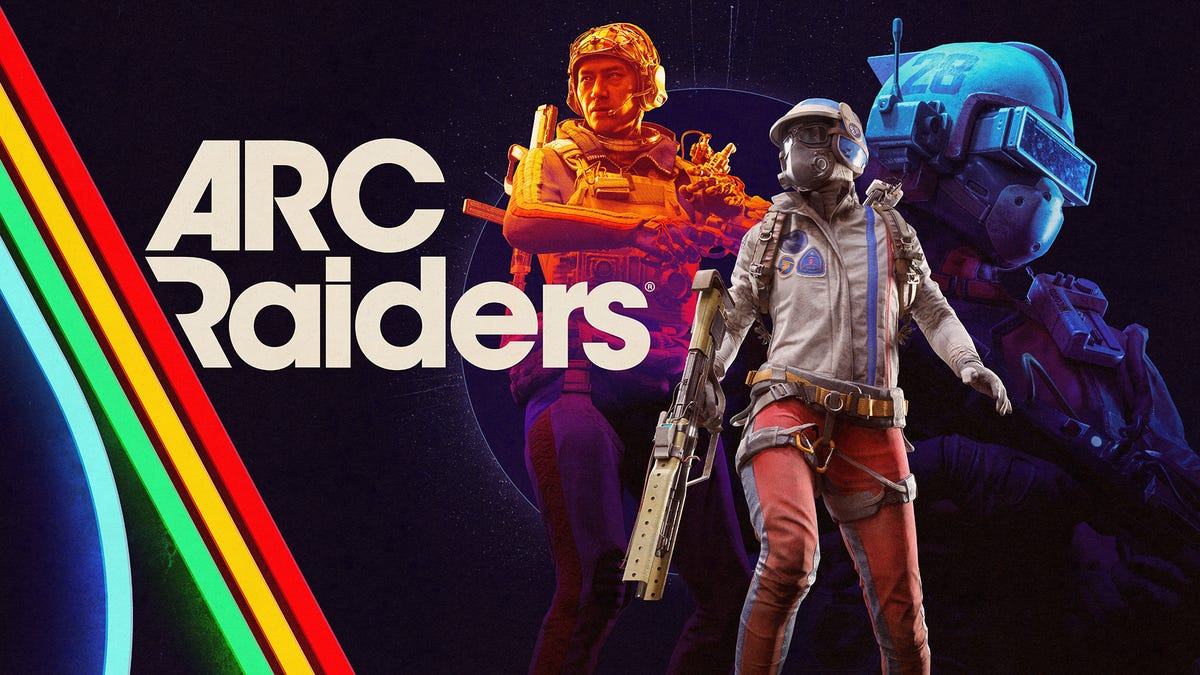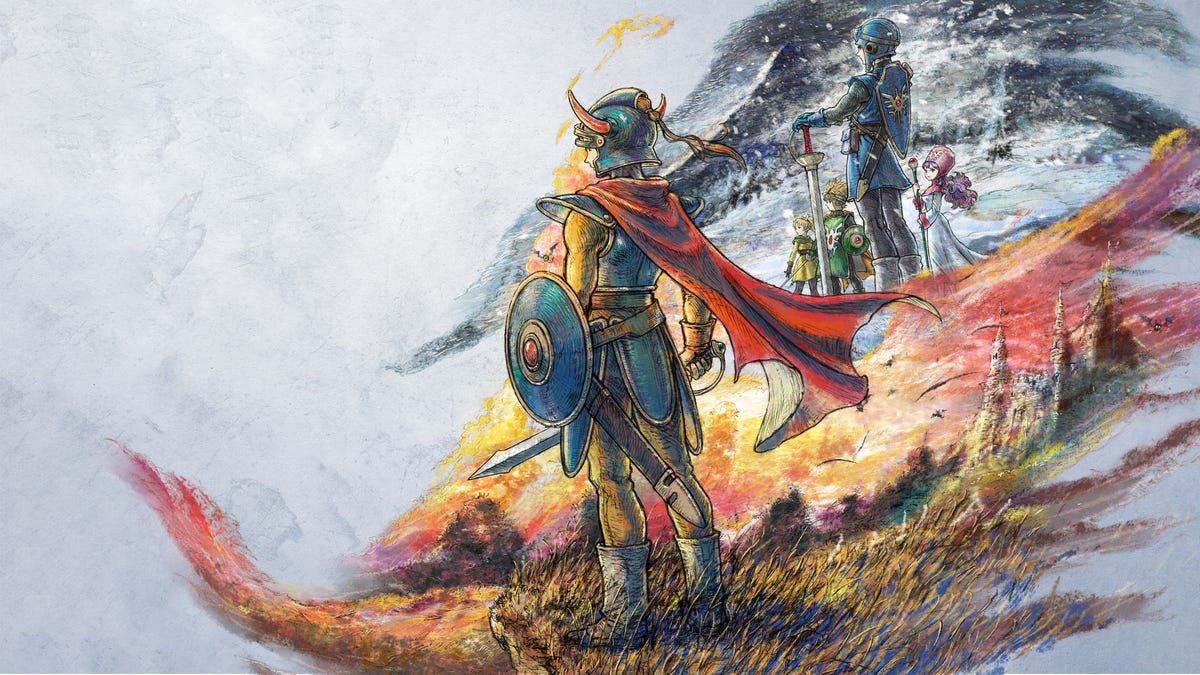Technologies
Nothing Phone 2 Finally Has a Launch Date
The next phone from Nothing will be unveiled in July.

Advertiser Disclosure
Nothing Phone 2, the next version of Nothing’s phone, will launch July 11, the company said in a teaser posted Tuesday on Twitter. The teaser invites people to «come to the bright side» and points to Nothing’s website.
Come to the bright side.
Meet Phone (2) on 11 July, 16:00 BST.
Join us for the official launch on https://t.co/pLWW07l8G7 pic.twitter.com/WoSw0gLJOx— Nothing (@nothing) June 13, 2023
The Nothing Phone 2 is expected to be a more high-end phone than the first version. Nothing has already confirmed it’ll include Qualcomm’s flagship Snapdragon 8 Gen 2 chipset.
The phone brand, which was launched by OnePlus founder Carl Pei in 2020, is relatively new to the market but has already gained attention for its affordable price and design. Pei tweeted Tuesday that the next operating system, Nothing OS 2.0, will also be launching to Nothing Phone 1 users by the end of August.
CNET’s Andrew Lanxon admired the Nothing Phone 1, a 5G device, for its «unique, flashy design» and «solid processor and camera performance.»
On the Nothing 1’s £399 price point, Lanxon said, «It’s a low price, but what you get is a phone that feels like a premium product.»
Will the Nothing Phone 2 be available in the US?
Unlike its predecessor, the Phone 2 will launch in the US alongside its release in the UK and Europe. There’s no word yet on what price point it will be offered at, or whether you’ll be able to get the phone through a carrier.
While the Nothing 1 did not launch in the US, you can get your hands on a beta of the company’s first phone for $299. However, CNET’s Mike Sorrentino said that just because you can, doesn’t mean you should. The phone mainly supports 4G, limiting carrier compatibility, and some apps may not function properly with the beta.
If you’re looking for a new phone, here are CNET’s lists on the best phones you should buy right now and the best Android phones of 2023.
Technologies
Nike’s New Robotic-Powered Footwear System: What to Know
Nike’s new system helps runners and walkers move with less effort, which Nike compares with electric bikes.

Nike’s new innovation, Project Amplify, is a robotic-powered footwear system for running and walking. And though it looks cool, it might still be a while before you can try it out for yourself.
The system consists of a motor, drive belt and rechargeable cuff battery integrated into a carbon fiber-plated running shoe. According to Nike, Project Amplify is designed to augment natural lower leg and ankle movement.
Don’t miss any of our unbiased tech content and lab-based reviews. Add CNET as a preferred Google source.
Nike said it’s developing Project Amplify to make slower walking, jogging and running easier and more fun, comparing the system with an electric bike. Rather than competitive runners, Project Amplify is aimed at athletes with mile paces between 10 and 12 minutes.
Nike created Project Amplify alongside robotics partner Dephy. It’s still in the testing stage, but Nike plans to launch the footwear system to consumers broadly «in the coming years.»
This year, the footwear company also released a pair of shoes for warmups and cooldowns, the Hyperboots, which feature heating and air-compression massage technology inside. The Hyperboots sell for $900.
Technologies
ARC Raiders Review: This Is the Best Extraction Shooter I’ve Ever Played
Embark Studios’ new game has tight gunplay and great maps. More importantly, there are quality-of-life features that every extraction shooter should implement.

I gingerly step through broken glass, flanked by two world-weary teammates, entering a long-abandoned supermarket to hunker down as rotors whir overhead. We’d already wasted enough precious ammunition fighting a pack of flying ARC drones — the latest from an annihilation wave of killer robots responsible for wiping out most of humanity. As we poke around the burnt-out remains of cash registers and store shelves, a distinctly human voice shouts down a nearby hallway. I check my bullet count, raise my weapon, hold my breath and say a prayer as we prepare for another fight.
Every moment is «go time» in developer Embark Studios’ ARC Raiders, an online multiplayer shooter where dual threats — man and machine — threaten to take your life around every corner. Players step into the role of the eponymous raiders, who are the only folks crazy enough to leave the underground city of Speranza (one of the final bastions of humanity) to gather supplies above ground.
Some raiders are after fame, some are after fortune. Most just want to eke out a modest living. A common interest in survival doesn’t mean instant trust, so expect most players to shoot first and ask questions later. Still, communication with strangers is possible, and during a previous press preview, I’d found that uncertain friendships can blossom amid the gunfire.
These emergent narratives are the bread and butter of ARC Raiders matches, in which squads of up to three players emerge from the underground to scavenge loot — either from the scraps of society or other players. As a so-called extraction shooter, each match requires juggling the risk of safely sneaking around the edge of the map or charging into the center for better loot before you make your escape. Meeting (and often dispatching) interesting people while robots threaten to rain hellfire on all of you makes for an addictive gameplay loop, one that often leaves me craving another match regardless of whether or not I just escaped with my life.
Beginner quests, skill point progression and free loadouts (that don’t risk your precious item hoard) exist so casual players have a way to improve their character without the stinging loss of loot from a failed run, which helps make early matches a little less daunting. But the truly exhilarating «a-ha» moment is when you realize that ARC Raiders has reprogrammed the way you see an in-game world.
Become an apex predator or risk becoming prey
A lone raider sits atop a long-abandoned spaceport with a bolt-action rifle, taking pot shots at a straggler who is being harassed by ARC drones hundreds of meters away. A squad of three makes use of heavy rain to flank a team attempting to breach a communications uplink full of valuable scrap. A well-prepared scavenger sees a flashlight bobbing up a winding flight of stairs and pulls the pin on their high-explosive grenade.
Vignettes of my successful ambushes blend together, the memories spiking dopamine and a whole lot of precious loot. Surviving above Speranza entails rummaging through containers and bringing back some crafting supplies, but to truly thrive topside requires a total perspective shift.
Tactical thinking is a far more potent weapon than crackshot aim. ARC Raiders puts a lot of tools in players’ hands: Grappling hooks, ziplines, smoke grenades, makeshift explosives and noisemakers that draw in nearby ARC robots are just a few of the gadgets that help you turn the tide of battle against an opposing player. Rechargeable shields enable players to run and recover. While a longer time-to-kill (meaning players can take more hits than in some similar games) can feel frustrating for ambushers, it does inspire cat-and-mouse pursuits and dramatic revenge arcs.
The constant flip-flop of control is absolute chaos, but that’s part of the game’s core design. One second, you’re the apex predator, hunting down a raider who’s none the wiser. A moment later, you have to band together to fight ARC robots leaping toward you from hundreds of feet away.
Even when all hope is lost and you know you’re losing your items, there are tools to call ARC robots to your location. The ultimate petty move is to get the AI to bomb out the location and eliminate the player who put you down. While plenty of other games feature the thrilling chance that a third party of players might crash the gunfight you’re having with another squad, ARC Raiders ensures there are often robot drones around to complicate combat.
The most recent build of the game concentrates more shiny weapons and crafting materials than ever in named points of interest around the map, with sparse loot around the edges, luring players toward the center. It seems Embark Studios recognizes that the best stories are told when players rub shoulders early and often in a match, so the developers have turned a few dials to make sure you always need to watch your back while breaking open the best containers in the game.
Whether I’m cutting down my foes or getting my lights punched out by a coordinated squad, every raider’s life is a tale inked in blood. The magic of ARC Raiders is that most matches tell a compelling story — you might make fast friends with a complete stranger or indiscriminately gun down man and machine as a one-man army. Either way, your personal narrative is never boring.
Grimy, cassette futurism vibes done right
While much of ARC Raiders’ appeal hinges on its intense moment-to-moment gameplay, the implementation of hulking robotic AI opponents and a more casual approach to the extraction shooter gameplay loop, it’s the pulpy sci-fi lore and grounded visual trappings that entranced me in the first place.
ARC Raiders developers say the game takes place in the «post-post-apocalypse,» a world where humanity has ultimately survived a near-extinction event. People persist beneath the ground as the natural world overtakes brutalist architecture, urban centers and even space launchpads. The synthesis of greenery and tech is absolutely beautiful, so it’s a shame that the game incentivizes you to turn down your graphical settings to have a better chance of seeing other players through dense foliage.
Persevering through an existential crisis made humans rekindle their appreciation for analog technology. Scavenger suits are adorned with a plethora of knobs, buttons and gauges that do heaven knows what, and barren office spaces are filled with bulky PC monitors. One map in particular features a spaceport that reminds me of grainy Space Race-era video footage that teachers would wheel out at school. It’s scary as hell to check your corners in abandoned industrial buildings, but taking a moment to really soak in the environments made me appreciate the haunted ode to humanity’s technological achievements.
If the ARC are the endpoint of machine advancement, it totally makes sense for humans in this world to make makeshift guns out of what amounts to PVC pipes, paperclips and chewing gum. But even the ARC feel delightfully retro, a vision of the future that is more HAL 9000 than T-1000 Terminator. These clean, efficient killers are like twisted parodies of an Asimov book cover, built to fulfill specific purposes and aid mankind before they turned on their masters.
Everything in ARC Raiders is built with a purpose, and when you look at cosmetics, weapons and enemy robots, you can understand what that purpose is at a single glance. This is well-executed visual design, which isn’t just important from an aesthetic standpoint. It’s crucial to be able to assess a threat right away in a competitive game with high stakes, where the wrong combat engagement can cost you hours of progress.
Games like Starfield and Concord angled for a grounded and grungy retrostyle, but a lack of interesting character designs meant those experiences largely fell flat. ARC Raiders oozes style — some visual motifs feel like they’re ripped straight off of industrial propaganda posters — and has the gameplay substance to back it up.
ARC Raiders stands tall among titans of the industry
To enter the extraction shooter arena, a developer has to be as fearless as an ARC Raider. The genre is infamous for high-profile failures like The Cycle: Frontier and projects that never come to fruition, such as Sega’s Hyenas. Bungie’s Marathon is supposed to be a serious contender, but that game has been marred with one black eye after another, and is now indefinitely delayed. Certainly, no game has come close to dethroning Escape From Tarkov from its spot as the top dog extraction shooter.
But Embark Studios has been a disruptive force in the industry before: The developer’s debut release, The Finals, took the world by storm with its Battlefield-like world destruction and its game show spin on the battle royale subgenre.
Embark Studios has captured lightning in a bottle once again with ARC Raiders. Other extraction shooters have had player-versus-AI elements to contend with in each match, like Escape From Tarkov’s scavengers and rogues and The Cycle: Frontier’s fearsome reptilian foes. None have ever felt quite as deadly, nor as intelligent, as the robots that roam the world of ARC Raiders.
Most importantly, ARC Raiders is perhaps the most easily accessible extraction shooter for a casual audience. If you’re scared of losing the last bits of valuable loot in your stash, you can enter a match with random shoddy equipment to try and earn better materials and weapons at very little personal risk. And with lower-quality gear, you’ll have to adjust your strategy and learn different ways to be effective in matches.
ARC Raiders’ unique spin on the extraction shooter formula, though, is a voluntary wipe system. While other games delete players’ loot hoards on a regular basis, Embark found a way to incentivize the more hard-core players to reset their stash to access special cosmetic rewards, while assuring casual players they won’t ever have to give up their entire inventory. Knowing that I won’t have to lose out on my strongest weapons or the skill points I’ve invested in my character makes ARC Raiders feel more approachable as a game that I can play «long-term,» as opposed to something I’ll only play for a brief stint before blitzing the next big thing.
This system might need balance passes as the game evolves, but it’s a clear signal from Embark Studios that tells casual players that the time and energy they spend on this game will be respected.
This game nails the fundamentals of extraction shooters with its tight gunplay, exciting loot and map designs rife with ambush locations. Its special blend of player-versus-player-versus-freakishly-intelligent-robot gameplay will enrapture extraction-shooter fans and newcomers alike. While losing your loot is always deflating, ARC Raiders has guardrails in place to get a casual gamer back in the action quickly and easily.
After every press preview, playtest and server slam ends, the only thing I can think of is this: When do I get to play ARC Raiders again? While I can’t speak to the game’s overall staying power in what is a very difficult genre to successfully breach, I also can’t imagine this game is going the way of The Cycle: Frontier anytime soon.
This is a review in progress. It will be updated after ARC Raiders is publicly released on Oct. 30.
Technologies
Dragon Quest I & II HD-2D Remake Brought Me Back to When RPGs First Felt Magical
Take a trip back to the ’90s to learn where JRPGs started.

A professor once told me that one of the defining moments of becoming your own person is when you find music that isn’t what your parents listened to and make it your own. I’ve always felt the same applies to video games, once you find the one that defines your favorite genre. For me, that was the roleplaying game Dragon Warrior on the NES, now known as Dragon Quest I, and I’ve found myself back in that world with the new Dragon Quest I & II HD-2D Remake.
This marks the second remake of the older Dragon Quest games from Square Enix, following last year’s Dragon Quest III HD-2D Remake. Like the previous game, players experience a modern retelling of the first two titles in the iconic Dragon Quest franchise that helped create the Japanese RPG subgenre. While I didn’t play enough of both games to give a full review, diving back in brought back a flood of memories of my first time experiencing an RPG, and falling in love with the genre.
Like many kids back in the NES era, I played Dragon Warrior thanks to a free copy sent to Nintendo Power subscribers, though I didn’t have a subscription. A friend of mine, one of the few kids I knew with an NES, got it and showed it to me one Saturday. It blew our minds because it wasn’t simple action gameplay like Super Mario Bros., where you run and jump, or The Legend of Zelda, where Link slashes enemies. Instead, we read what was happening as the game’s story unfolded. I was hooked.
This time around, there’s still plenty of reading, but the remake updates the experience in countless ways. Both games have the same HD-2D visual style seen in Dragon Quest III HD-2D Remake. The characters and enemies retain designs by legendary artist Akira Toriyama (Dragon Ball, Dragon Ball Z), but now include richer detail in their 2D sprites, set against lushly animated 3D environments.
There’s also voice acting for many of the characters and enemies, and as you’d expect from an RPG set in a medieval world, everyone speaks with a British accent. Seeing the updated visuals and hearing the voices brought me back to how amazed I was as a kid, when enemy sprites on the NES looked incredibly detailed, and reading the dialogue aloud practically required talking like the king in Disney’s Robin Hood.
Square Enix didn’t add full cinematics but instead uses character sprites to create dynamic scenes. In Dragon Quest I, the descendant of the legendary hero Erdrick (whom I remembered calling «Edrick») is tasked by King Lorik to rescue his daughter and defeat the villainous Dragonlord, who has stolen the Ball of Light that had kept the forces of evil at bay. These story beats were told through text on the NES, but the remake visualizes them in a way that was once only imaginable.
Dragon Quest II does the same, showing the attack on the tranquil castle of Moonbrooke with far more action and drama than the short action sequence of the original.
One thing I appreciate about this remake is the added story context. In Dragon Quest II, the descendants of the hero from the first game must unite to face a new evil. The player begins as the Prince of Midenhall, setting off to find his cousins, starting with the Prince of Cannock. In the original, players simply learned that the prince had left for Wellspring and found him resting in a town along the way. The remake includes a short sequence where his sister joins you on the journey — a small but meaningful touch that gives a bit more depth to the simple story.
Another pleasant surprise is the addition of abilities. In the original games, characters could only use regular attacks or magic. The new abilities add offensive options, such as striking all enemies at once or reflecting damage at the cost of magic points — skills familiar to players of the Dragon Quest III HD-2D Remake. These abilities really shine in Dragon Quest II, where the Prince of Midenhall can’t use magic but can rely on these techniques, adding strategic variety to battles.
As expected from an HD remake, there are numerous «quality of life» improvements. Players can speed up battles, warp between cities and dungeons, and benefit from autosaves. The ability to run, though simple, is a huge improvement. Today’s gamers have no idea how tedious it was to move one step at a time on the NES.
Of all the improvements, the visuals struck me most, especially the world design. The Dragon Quest world remains in 2D, but terrain like forests and mountains now feels layered and immersive. On the NES, these were blocky squares; in the remake, your character weaves through trees and climbs hills. It feels like seeing what my 11-year-old imagination once filled in. I still remember every inch of that map, burned into memory after endless hours of play.
One brilliant design choice from the original remains: The final boss’s castle sits just a short distance from where you start, though you don’t realize its significance until much later. In the remake, the Dragonlord’s lair now looms behind walls, giving it an even more ominous presence. I wanted to explore every corner again, but the rising enemy difficulty quickly stopped that plan.
There’s no question that this is the best way to play the original Dragon Quest 1 & 2 games, but even with their beautifully reimagined graphics, they’re still older games. This is still a turn-based RPG that has no flashy actions or award-winning story. It’s clear that Dragon Quest I & II HD-2D Remake is for players like me who grew up with these adventures. Those curious about the roots of the JRPG genre can also find enjoyment here, much like cinephiles who buy Blu-rays of silent films. For everyone else, there’s little reason to jump in immediately, but this faithful remake might be worth a look when it inevitably goes on sale.
Dragon Quest I & II HD-2D Remake will be released on Oct. 30 for $60 on PC, PS5, Nintendo Switch, Switch 2, Xbox Series X and S consoles.
-

 Technologies3 года ago
Technologies3 года agoTech Companies Need to Be Held Accountable for Security, Experts Say
-

 Technologies3 года ago
Technologies3 года agoBest Handheld Game Console in 2023
-

 Technologies3 года ago
Technologies3 года agoTighten Up Your VR Game With the Best Head Straps for Quest 2
-

 Technologies4 года ago
Technologies4 года agoVerum, Wickr and Threema: next generation secured messengers
-

 Technologies4 года ago
Technologies4 года agoBlack Friday 2021: The best deals on TVs, headphones, kitchenware, and more
-

 Technologies4 года ago
Technologies4 года agoGoogle to require vaccinations as Silicon Valley rethinks return-to-office policies
-

 Technologies4 года ago
Technologies4 года agoOlivia Harlan Dekker for Verum Messenger
-

 Technologies4 года ago
Technologies4 года agoiPhone 13 event: How to watch Apple’s big announcement tomorrow
